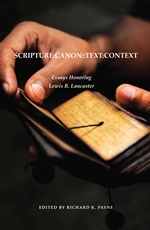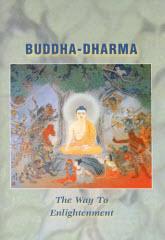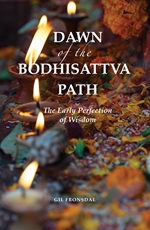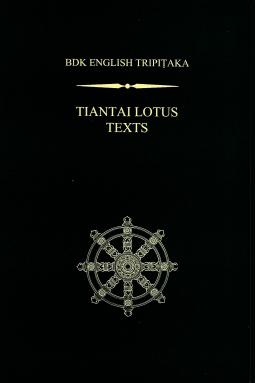 |
 |
 |
 |
 |
 |
 The table of contents below contains links to the MUSE edition of each article and shows either an abstract or a sample image from each of the main entries.
The table of contents below contains links to the MUSE edition of each article and shows either an abstract or a sample image from each of the main entries.
Asia Society Statement
Melissa Chiu, 1
From Studiolo to Chaekgeori, A Transcultural Journey: An Introduction to Sunglim Kim’s “Chaekgeori: Multi-Dimensional Messages in Late Joseon Korea”
Jerome Silbergeld, available only online
Chaekgeori: Multi-Dimensional Messages in Late Joseon Korea
Sunglim Kim, 3

Continue reading “Archives of Asian Art, vol. 64, no. 1 (2014)”
The White Plum: A Biography of Ume Tsuda, Pioneer of Women’s Higher Education in Japan
Yoshiko Furuki
196 pages
Cloth | 978-0-8248-5339-6 | $31.00
The Chaos and Cosmos of Kurosawa Tokiko: One Woman’s Transit from Tokugawa to Meiji Japan
Laura Nenzi
280 pages
Cloth | 978-0-8248-3957-4 | $48.00
Indonesian Grammar in Context: Asyik Berbahasa Indonesia
Ellen Rafferty, Molly F. Burns, and Shintia Argazali-Thomas
264 pages
Not for sale in Southeast Asia, Published in association with NUS Press
Volume 1 | 978-0-8248-3478-4 |$27.00
Volume 2 | 978-0-8248-3574-3 | $29.00
Volume 3 | 978-0-5248-3575-0 | $32.00
Find our other Indonesian Language title, Let’s Speak Indonesian, by clicking here
A Study of Saisiyat Morphology
Elizabeth Zeitoun, Chu Tai-hwa, and Lalo a tahesh kabaybaw630 pages
Oceanic Linguistics Special Publications, No. 40Paper | 978-0-8248-5042-5 | $40.00
Asuka Sango
304 pages
Cloth | 978-0-8248-3986-4 | $54.00
Alicia Turner
240 pages | Southeast Asia: Politics, Meaning, and Memory
Cloth | 978-0-8248-3937-6 | $54.00
Albert L. Park
320 pages
Cloth | 978-0-8248-3965-9 | $56.00

Javaphilia: American Love Affairs with Javanese Music and Dance
Henry Spiller
278 pages | 41 illustrations | Music and Performing Arts of Asia and the Pacific
Cloth | 978-0-8248-4094-5 | $42.00
Eating Korean in America: Gastronomic Ethnography of Authenticity
Sonia Ryang
208 pages | 12 color illustrations | Food in Asia and the Pacific
Cloth | 978-0-8248-3935-2 | $39.00
Hokusai’s Great Wave: Biography of a Global Icon
by Christine Guth
January 2015 | 272 pages | 70 color illustrations, 5 black & white
Paper ISBN 978-0-8248-3960-4 | $20.00 $15.00
Cloth ISBN 978-0-8248-3959-8 | $57.00 $42.75
 The table of contents below contains links to the MUSE edition of each article and shows either an abstract or a sample image from each of the main entries.
The table of contents below contains links to the MUSE edition of each article and shows either an abstract or a sample image from each of the main entries.
The Jageshwar Valley, Where Death Is Conquered
Nachiket Chanchani, 133

Continue reading “Archives of Asian Art, vol. 63, no. 2 (2013)”
 How can we qualify slowness in cinema? What is the relationship between a cinema of slowness and a wider sociocultural “slow movement”? A body of films that shares a propensity toward slowness has emerged in many parts of the world over the past two decades. This is the first book to examine the concept of cinematic slowness and address this fascinating phenomenon in contemporary film culture.
How can we qualify slowness in cinema? What is the relationship between a cinema of slowness and a wider sociocultural “slow movement”? A body of films that shares a propensity toward slowness has emerged in many parts of the world over the past two decades. This is the first book to examine the concept of cinematic slowness and address this fascinating phenomenon in contemporary film culture.
Providing a critical investigation into questions of temporality, materiality, and aesthetics, and examining concepts of authorship, cinephilia, and nostalgia, Song Hwee Lim offers insight into cinematic slowness through the films of the Malaysian-born, Taiwan-based director Tsai Ming-liang. Through detailed analysis of aspects of stillness and silence in cinema, Lim delineates the strategies by which slowness in film can be constructed. By drawing on writings on cinephilia and the films of directors such as Abbas Kiarostami, Hou Hsiao-hsien, and Nuri Bilge Ceylan, he makes a passionate case for a slow cinema that calls for renewed attention to the image and to the experience of time in film.
Tsai Ming-liang and a Cinema of Slowness will speak to readers with an interest in art cinema, queer studies, East Asian culture, and the question of time. In an age of unrelenting acceleration of pace both in film and in life, this book invites us to pause and listen, to linger and look, and, above all, to take things slowly.
Written by Song Hwee Lim
2014 | 240 pages | 29 illustrations
ISBN: 978-0-8248-3684-9 | $45.00s | Cloth
 What are people’s life experiences in present-day Japan? Capturing Contemporary Japan addresses fundamental questions vital to understanding Japan in the first decade of the twenty-first century. Its chapters collectively reveal a questioning of middle-class ideals once considered the essence of Japaneseness. In the postwar model household, a man was expected to obtain a job at a major firm that offered life-long employment; his counterpart, the “professional” housewife, managed the domestic sphere and the children, who were educated in a system that provided a path to mainstream success.
What are people’s life experiences in present-day Japan? Capturing Contemporary Japan addresses fundamental questions vital to understanding Japan in the first decade of the twenty-first century. Its chapters collectively reveal a questioning of middle-class ideals once considered the essence of Japaneseness. In the postwar model household, a man was expected to obtain a job at a major firm that offered life-long employment; his counterpart, the “professional” housewife, managed the domestic sphere and the children, who were educated in a system that provided a path to mainstream success.
Contributors draw on rich, nuanced fieldwork data collected during the 2000s to examine work, schooling, family and marital relations, child rearing, entertainment, lifestyle choices, community support, consumption and waste, material culture, well-being, aging, death and memorial rites, and sexuality. The voices in these pages vary widely: They include schoolchildren, teenagers, career women, unmarried women, young mothers, people with disabilities, small business owners, organic farmers, retirees, and the elderly.
Edited by Satsuki Kawano, Glenda S. Roberts, and Susan Orpett Long
2014 | 376 pages | 12 illustrations
ISBN: 978-0-8248-3868-3 | $55.00s | Cloth
ISBN: 978-0-8248-3869-0 | $25.00s | Paper
 The table of contents below contains links to the MUSE edition of each article and shows either an abstract or a sample image from each of the main entries.
The table of contents below contains links to the MUSE edition of each article and shows either an abstract or a sample image from each of the main entries.
Exorcism from the Streets to the Tomb: An Image of the Judge and Minions in the Xuanhua Liao Tomb No. 7
Jeehee Hong, 1

Palace Museum, Beijing.
Continue reading “Archives of Asian Art, vol. 63, no. 1 (2013)”